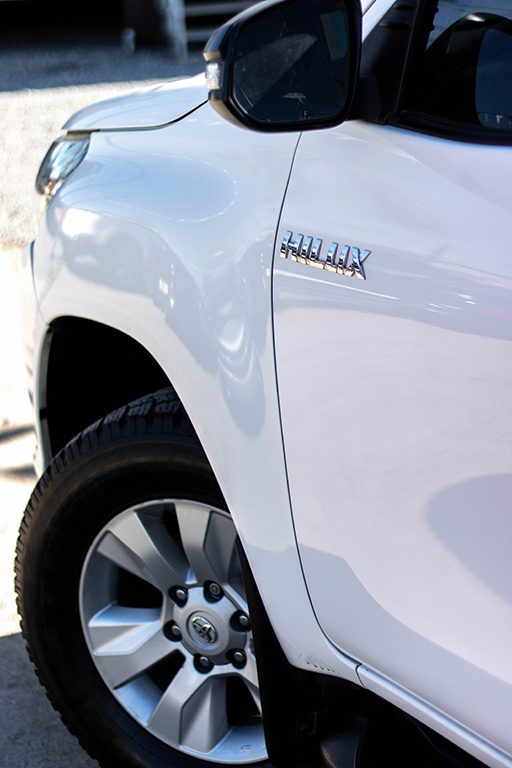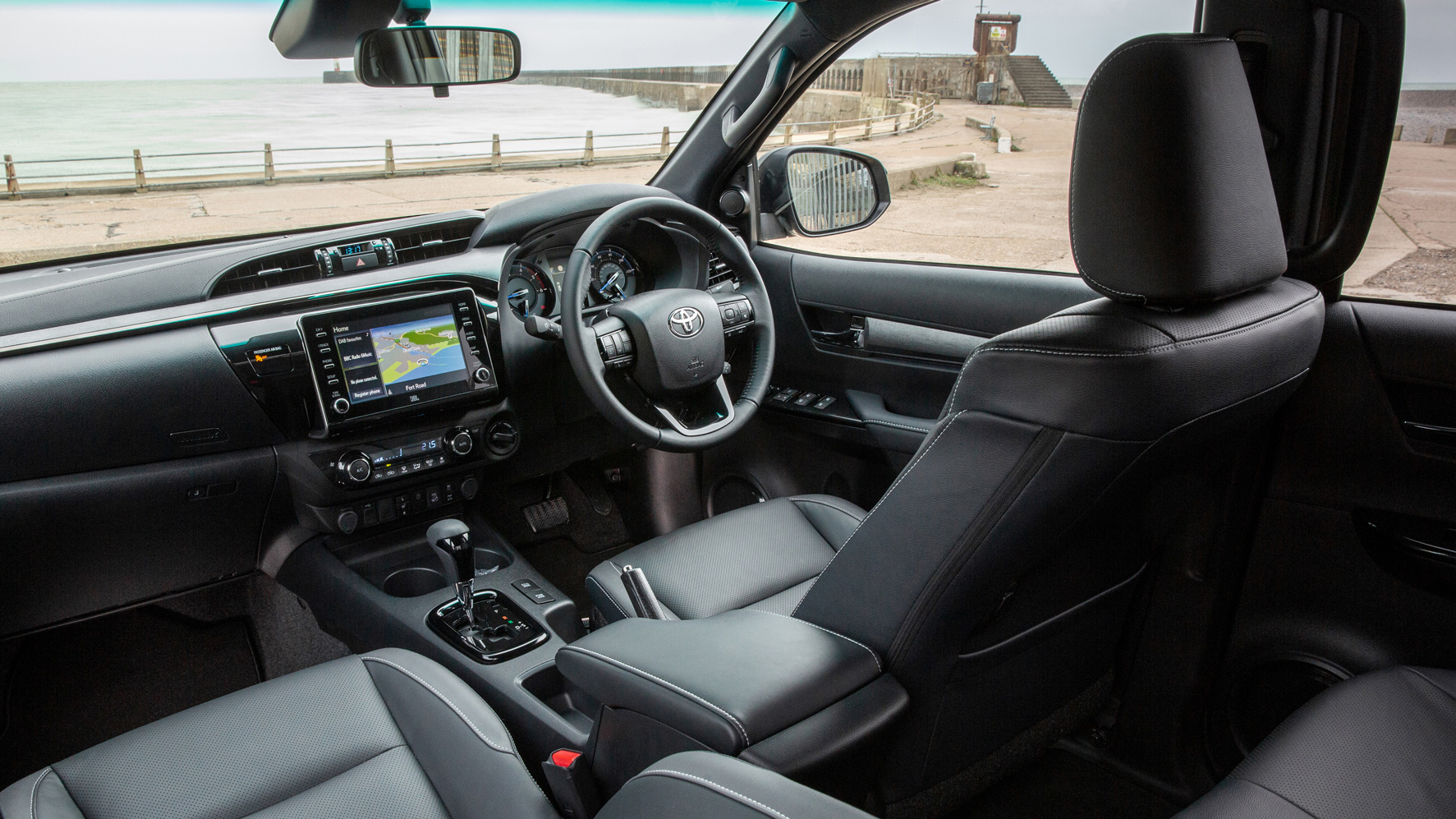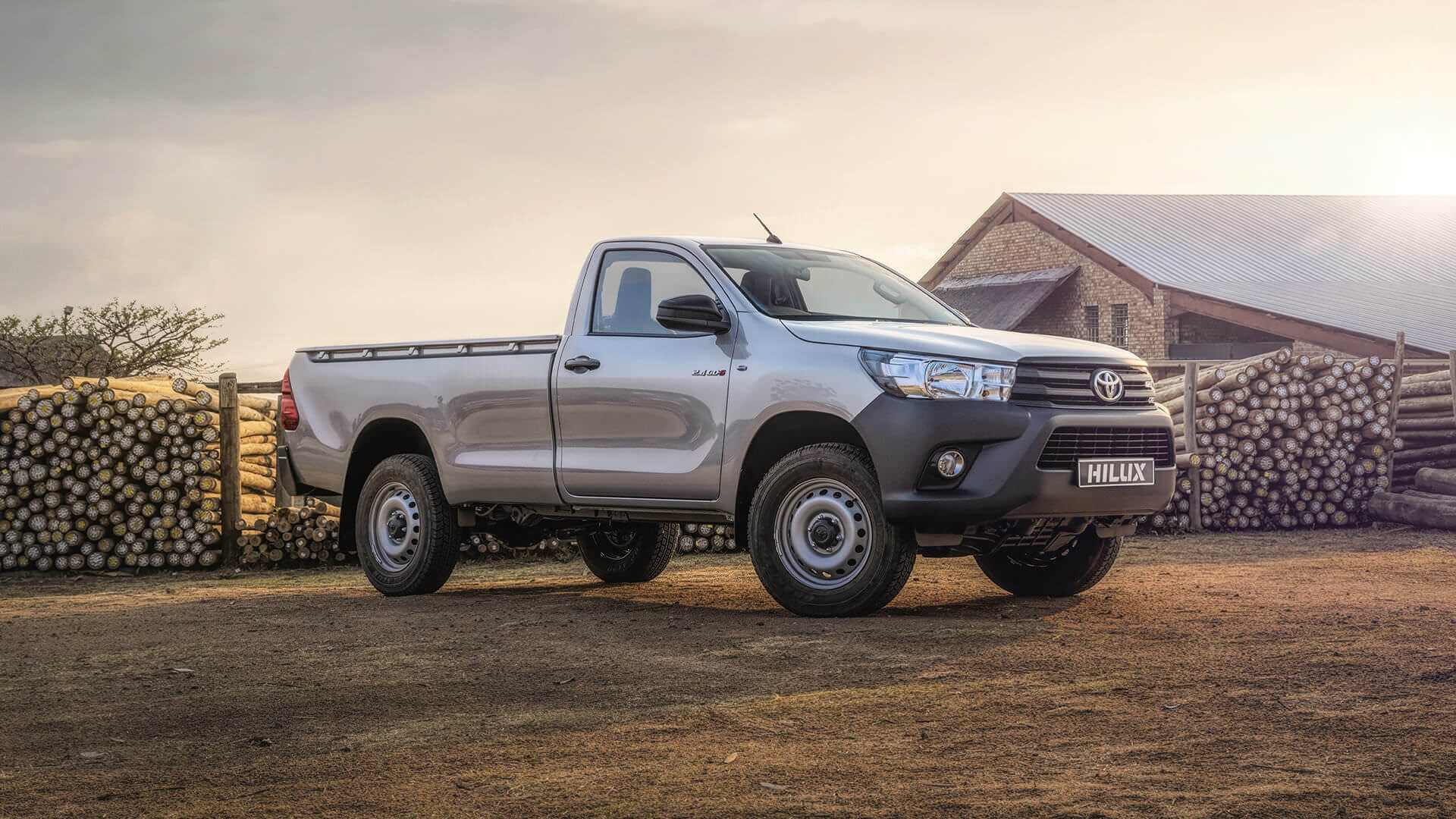The Toyota Hilux is very much a part of South African culture. The first model landed on our shores some 25 years before the country won democracy in 1994, and it has created a rich history envied by all motoring brands in the country.
This single cab with 1.5- and 1.6-litre engines have spawned 4.0-litre V8 versions, Arctic editions, and Dakar Rally-winning machines and has even been assimilated into the snobby Sandton set. Under the leather upholstery, touchscreens, and tech features of the range-topping versions, today still beats the heart of the undisputed king of the workhorse bakkie. The venerable Hilux is everything to everyone.
While this latest generation of Hilux might be more upmarket than previous iterations, and its on-road habits fool you into thinking it is a soft-roader, the Hilux retains a utilitarian, robust, legendary reliability, and never-say-die attitude for work. This article will explain buying, owning, and selling your eighth-generation Toyota Hilux.
Versions
The Hilux is available with three petrol engines and three diesel powerplants, from entry-level four-cylinder petrol with 102kW to the range-topping 2.8-litre, 130kW diesel behemoth. It comes in three cabin styles (single cab, Xtra cab, and double cab), but all share the same underpinnings, wheelbase length, and overall length. Buyers can also pick between 4×2 and 4×4 models and manual and automatic transmissions.
Interestingly, when scratching below the surface, you’ll find much of the seventh-generation Hilux still in use for this eight-gen. The new model range can best be considered a comprehensive overhaul of the predecessor instead of an all-new platform and vehicle. However, very few parts are interchangeable between the two model generations.
Trim lines begin with the entry-level S, RB S, RB SR, RB Raider, RB Legend, and RB Legend RS. Since its launch in 2015, there have been a number of limited edition models released. These include the 2018 50th anniversary model, the Hilux Invincible 50, and the 2019 GR Sport to celebrate its Dakar achievements with the Gazoo Racing squad.
Updates since its launch have been mainly cosmetic tweaks and upgrades of security systems. Toyota’s added LED headlights, updated the touchscreen media interface, and added more safety features, but nothing substantial.
The pre-owned Hilux market dwarfs its new car cousin. Estimates from the industry’s sales stats indicate that used Hilux models outsell new models by 5:1 monthly. We think that’s a conservative figure, seeing as only around 2,000 new models are sold per month locally.
High-value retention is one of the hallmarks beloved by owners of these models. There is very little in the way of price differences between a new model and a two- or three-year-old example, such is the popularity of these models in the current used car market.
Maintenance
The Toyota Hilux is a popular choice among vehicle buyers due to its reputation for durability and reliability. When considering the average maintenance costs and issues for a used Hilux, there are a few factors to keep in mind:
Service Costs:
Routine maintenance costs for a Toyota Hilux can vary depending on the model year, mileage, and the specific service package chosen. However, Toyota vehicles generally have competitive service costs compared to other brands. Toyota dealerships regularly run service specials, with oil changes starting at less than R1,000. If you’re more hands-on, you should check with authorized Toyota service centres or owners’ forums to understand the average costs for service items like oil changes, filter replacements, etc.
Common Issues:
While the Hilux is known for its robustness, there are a few common issues that owners may encounter:
- Clutch and Gearbox: Some Hilux models, especially those with higher mileage, have reported clutch and gearbox-related problems. During a test drive, it’s essential to check the clutch’s condition, including its engagement and disengagement. Listen for any abnormal noises or difficulty in shifting gears.
- Suspension and Bushings: The rough South African terrain can put a strain on the suspension components and bushings of any vehicle, including the mighty Hilux. Inspect the suspension for signs of wear, such as shock leaks, uneven tyre wear, or excessive bouncing during a test drive.
- Fuel System: Hilux models equipped with diesel engines have had occasional issues with their fuel systems. Look for any signs of fuel leaks. Ensure the fuel filter and injectors are in good condition.
- Electrical Systems: Some owners have reported minor electrical issues in the Hilux, such as problems with electric windows, central locking, or dashboard lights. Ensure that all electrical components are functioning properly during a test drive.
Regular Maintenance:
Regular maintenance is vital to keeping a Toyota Hilux in good condition. It’s important to follow the manufacturer’s recommended service intervals, which typically include oil changes, fluid checks, brake inspections, and timing belt replacements. Additionally, staying up-to-date with recalls (TSBs) and addressing them promptly is crucial for safety and reliability.
Owner Forums and Dealerships:
Utilize online owner forums and communities specific to Toyota Hilux. In fact, we’ve scoured them for information for this article – and they’ve proven incredibly valuable in our research. These platforms often contain helpful information about common issues, recommended service centres, and other owners’ experiences. Additionally, Toyota dealerships can provide information on service costs, known issues, and any recalls or warranty information.
NOTE: these maintenance costs and issues can vary depending on the specific model year, trim level, and how well the previous owner(s) maintained the vehicle. It’s always recommended to inspect any used vehicle thoroughly and, if possible, have a trusted mechanic conduct a pre-purchase inspection to assess its condition and identify potential issues.
Running Costs
The average running cost of a Toyota Hilux can vary depending on several factors, including the model year, engine type, fuel efficiency, driving habits, maintenance, and fuel prices. Here are some key factors to consider when estimating the running costs:
- Fuel Consumption: The Toyota Hilux is available with different engine options, including petrol and diesel variants. Diesel engines generally provide better fuel efficiency, but it ultimately depends on the specific model and driving conditions. It’s important to check the official fuel consumption figures provided by Toyota for the specific Hilux model you are interested in, as well as real-world fuel consumption data from owners’ forums or online resources.
- Fuel Prices: Fuel prices in South Africa can fluctuate over time, affecting the running costs of any vehicle. It’s essential to stay updated on the current fuel prices and consider how much you are likely to drive the Hilux regularly. This will help you estimate the fuel expenses based on the vehicle’s fuel consumption and prevailing fuel prices.
- Maintenance and Servicing: Regular maintenance and servicing are crucial for keeping a Toyota Hilux in good running condition. The costs associated with maintenance include routine services, oil changes, filter replacements, brake pad replacements, and other wear and tear items. The exact prices can vary depending on the service centre, parts used, and any additional repairs or replacements required. Opting for non-OEM servicing can significantly reduce the costs compared to dealership servicing for your Toyota Hilux. However, we strongly recommend using genuine OEM service parts, even if you choose a non-OEM workshop for the servicing. While non-OEM parts may be cheaper, using genuine parts ensures compatibility and maintains the vehicle’s reliability and performance.
- Insurance: Insurance costs can also contribute to the overall running expenses of a Toyota Hilux. Insurance premiums depend on various factors such as the model year, trim level, usage (private or commercial), driver’s profile, and the insurance provider. Obtaining insurance quotes from multiple providers is advisable to get an idea of the average insurance costs for the specific Hilux model you are considering. The insurance industry considers the Toyota Hilux a vehicle with a high risk of theft due to its popularity among thieves. Consequently, insuring a Hilux may come with a surprisingly high cost. However, it’s important to note that insurance risk assessment depends heavily on factors such as the vehicle’s storage security measures, the areas it frequents, and even the total mileage if it’s used for business purposes. These factors can influence the insurance premium, so it’s crucial to consider them when determining the insurance cost for a Toyota Hilux.
- Tyres: Tyre replacement is another cost to consider. The frequency of tyre replacements depends on factors such as driving style, road conditions, and tyre quality. It’s important to budget for tyre replacements based on the estimated lifespan of the tyres and the prevailing prices for the specific tyre size used on the Hilux.
- Licensing and Registration: The costs associated with licensing and registration may vary depending on the province or municipality in South Africa. These costs typically include license renewal fees, registration fees, and other administrative charges.
Value-For-Money
The Toyota Hilux has a well-established reputation for holding its value exceptionally well in the South African market. Its strong resale value is one of the key factors that make it an attractive choice for buyers and contributes to its popularity in both the new and used car markets.
Several factors contribute to the Hilux’s strong resale value in South Africa. Toyota has a long-standing reputation for building reliable and durable vehicles. The Hilux, in particular, has earned a solid reputation for its robustness, dependability, and ability to withstand tough conditions. This positive perception of the brand and the Hilux’s track record significantly contribute to its resale value.
The Toyota Hilux has a broad and dedicated customer base in South Africa. It is a versatile vehicle that appeals to various segments, including individuals, families, and commercial users. The strong demand for Hilux models ensures a healthy market for both new and used vehicles, supporting its resale value.
The Hilux’s reputation for durability and reliability translates into a higher resale value. Prospective buyers are willing to pay a premium for a used Hilux, knowing they are getting a vehicle with a proven track record of dependability and long-lasting performance.
South Africa’s diverse terrain and off-road enthusiasts contribute to the Hilux’s resale value. Its exceptional off-road capabilities and ability to handle challenging terrains make it highly desirable among adventure-seeking buyers, further boosting its value in the used car market.
Remember, while the Toyota Hilux is a popular vehicle in South Africa, the supply of used Hilux models may not always meet the demand. This scarcity of available units can drive up prices and contribute to the Hilux’s strong resale value.
Toyota’s extensive dealership network and availability of genuine spare parts and accessories support the Hilux’s resale value. Prospective buyers have confidence in maintaining and servicing their vehicles conveniently and at reasonable costs, which enhances the overall ownership experience and resale value.
The Pre-Purchase Inspection
When purchasing a used Hilux, conducting a thorough pre-purchase inspection is crucial to ensure that you’re making a well-informed decision and to identify any potential issues or hidden problems with the vehicle. Here are some key aspects to consider when performing a pre-purchase inspection for a Toyota Hilux:
- Mechanical Inspection: Engage a qualified mechanic or technician familiar with Toyota vehicles, especially the Hilux model, to perform a comprehensive mechanical inspection. This should include checking the engine, transmission, drivetrain, suspension, brakes, steering, and exhaust system. They should also assess the vehicle’s overall condition, paying attention to any signs of leaks, rust, or abnormal wear and tear.
- Body and Exterior: Inspect the body and exterior of the Hilux for any signs of damage, such as dents, scratches, or evidence of previous accidents. Look closely for any signs of rust or corrosion, particularly in areas prone to rust, such as the undercarriage, wheel arches, and door sills. Ensure that the doors, tailgate, and bonnet open and close smoothly.
- Interior Inspection: Check the condition of the interior, including the seats, carpets, dashboard, and door panels. Look for any signs of excessive wear, stains, or damage. Test all the controls, switches, and electrical features, such as lights, air conditioning, power windows, central locking, and infotainment system, to ensure they are functioning correctly.
- Test Drive: Take the Hilux for a comprehensive test drive to evaluate its performance and handling. Pay attention to the engine responsiveness, transmission shifts, braking performance, and steering feel. Listen for any unusual noises, vibrations, or warning lights during the test drive. Test the four-wheel drive system if applicable, ensuring it engages and disengages smoothly.
- Service History and Documentation: Request the vehicle’s service history and documentation to verify that it has been properly maintained. Look for evidence of regular servicing, including oil changes, filter replacements, and major repairs. The service history can provide insight into how well the previous owner(s) cared for the vehicle.
- Vehicle Identification Number (VIN) Check: Conduct a VIN check to ensure that the vehicle’s identification number matches the records and has not been tampered with or involved in any major accidents or thefts.
- Optional Inspections: You may consider additional inspections depending on your specific concerns or requirements. For example, a specialized off-road inspection could be valuable if you plan to use the Hilux for off-road adventures. Additionally, a comprehensive inspection of the vehicle’s electrical systems, including the battery and wiring, may be beneficial.

The Final Thoughts
The Toyota Hilux holds a special place in South African culture and has established itself as an iconic vehicle with a rich history. Whether you’re in the market for a new or used Hilux, understanding the key aspects of buying, owning, and selling this versatile workhorse is essential.
When considering a used Hilux, conducting a comprehensive pre-purchase inspection is crucial. Focus on mechanical components, body condition, interior features, and a thorough test drive to ensure you make a well-informed decision. Additionally, reviewing the vehicle’s service history and performing a VIN check can provide valuable insights into its maintenance and overall condition.
Maintenance costs and common issues should be taken into account when assessing the ongoing expenses of owning a Hilux. Following the manufacturer’s recommended service intervals, utilizing genuine OEM parts, and staying up-to-date with recalls are essential for keeping your Hilux in optimal condition and ensuring its reliability.
Furthermore, the Toyota Hilux has a reputation for strong resale value in the South African market. Its durability, reliability, and high market demand contribute to this enduring value, making it a wise investment for buyers who appreciate long-term value retention.
Lastly, remember to factor in running costs such as fuel consumption, maintenance, insurance, tires, and licensing fees when estimating the overall expenses associated with owning a Toyota Hilux.
With its versatility, off-road capabilities, and wide range of options, the Toyota Hilux continues to dominate the South African automotive landscape. Whether you’re a passionate adventurer, a hardworking individual, or a family needing a reliable vehicle, the Hilux has proven to be a trusted companion that can handle the demands of South Africa’s roads and terrains.
So, if you’re looking to embark on your journey with a Toyota Hilux, armed with the knowledge presented in this article, you’ll hopefully be better equipped to make an informed decision, maximise the value of your investment, and enjoy the enduring legacy of this beloved vehicle.





Comment